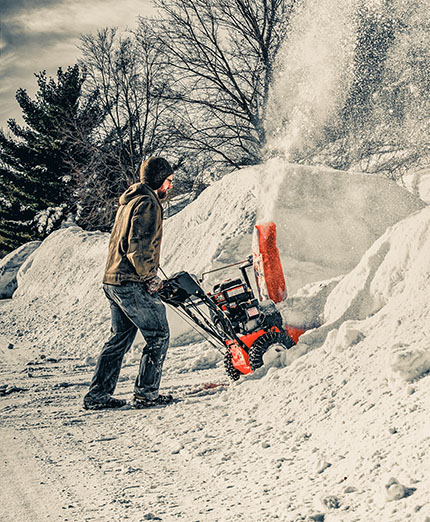How to Shovel Snow Safely to Protect Your Back & Heart
By Kristy Warren
Shoveling snow by hand is hard, physically taxing work, and northeast winters often mean a lot of it! Manually shoveling snow off sidewalks, steps, and driveways can leave us sore and sweating, but did you know it can actually be dangerous to your health?
Without proper technique, support, and rest breaks, shoveling snow can damage joints and overwork, sprain, or tear muscles, particularly along your rotator cuff or lower back. It can also put life-threatening stress on your most important muscle: your heart. Shoveling snow can even trigger heart attacks.
Come winter, the Laurel Health Centers see many injuries related to wintry weather, including falls and sprains from removing snow. Our Laurel Health experts share easy-to-remember tips for shoveling snow safely to avoid stress and injury:
- Start gradually. Shoveling snow is vigorous exercise. As with any workout, it’s important to stretch and start slowly to ensure you properly warm up your muscles.

- Wear appropriate clothing. You'll be outside for a while so make sure you're protected from the cold with warm clothes designed to stand up to outdoor temperatures.
Reach for a hat, scarf, heavy winter jacket, water-resistant gloves, and insulated pants, preferably snow pants.
- Lift with your legs, not your back. Heavy snowfall is just that: heavy! When possible, push snow to clear off pathways without lifting like a plow. When you need to lift the snow shovel, think of moving snow like lifting a package: bend at the knees and maintain a straight back. Avoid twisting side-to-side to throw snow over your shoulder. If you need to deposit snow to the side, turn your entire body to face your snow dumping pile instead of repeatedly twisting your torso while holding a heavy shovelful of snow.
- Take breaks. Come inside periodically to warm up and rest your muscles. Resting regulates your body temperature and breathing, so a short break helps keep you from overdoing it.
- Enlist help with snow removal. If you are a senior, fall risk, feeling ill, have a chronic health condition, or have a large area to shovel, it is best to enlist the help of loved ones, neighbors, or a professional to handle snow removal.
- Invest in equipment. If you live in an area that regularly sees significant snowfall, invest in a snow blower or attachable truck / tractor plow to cut down on manual snow shoveling, or arrange for a friend or neighbor with said equipment to help you out.
- Hydrate. When we feel the sting of cold weather, we often brush aside the idea of working up a sweat, but staying hydrated during strenuous activity like shoveling snow is important.
If cold water is too unappetizing, try room-temperature water or tea.

- Change into warm, dry clothes. When you're done shoveling, it's important to get out of your cold, wet clothes and get back up to temperature. You can sit by a fireplace or heater, drink a hot drink like tea, take a warm shower, or put on fresh clothes warmed by the dryer to warm up faster.
If you are experiencing back, neck, or muscle pain following snow shoveling, talk with your family doctor about your concerns. Laurel Health providers are available to do both onsite and telemedicine consultations to review symptoms and get you the care you need quickly and safely.
Our Laurel Health Centers offer award-winning family medicine, behavioral health services, and specialty care for the whole family throughout Tioga, Bradford, and Sullivan Counties in northcentral PA, including sites in Blossburg, Elkland, Laporte, Lawrenceville, Mansfield, Towanda, Troy, Wellsboro, and Westfield, PA.
Laurel Health’s services include primary care, pediatrics, dental services, women’s health, preventive wellness care, internal medicine, chiropractic care, walk-in care, sports medicine, mental health counseling, nutrition therapy, diabetes education, care coordination, chronic disease management, insurance enrollment assistance, and more. We are committed to serving all patients regardless of their ability to pay, offering a sliding fee scale to ensure all patients can access the care they need.
For more winter safety tips, stayed tuned to Laurel Health's news page or visit us on Facebook at facebook.com/laurelhc.
